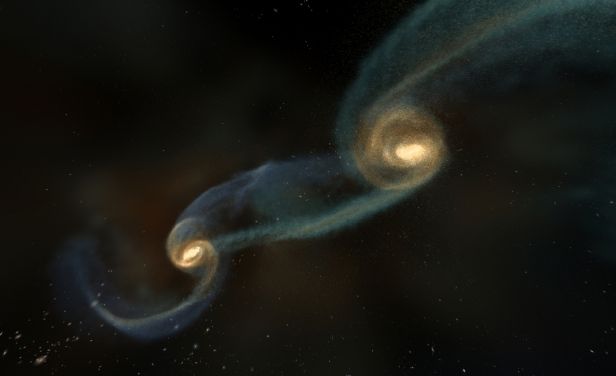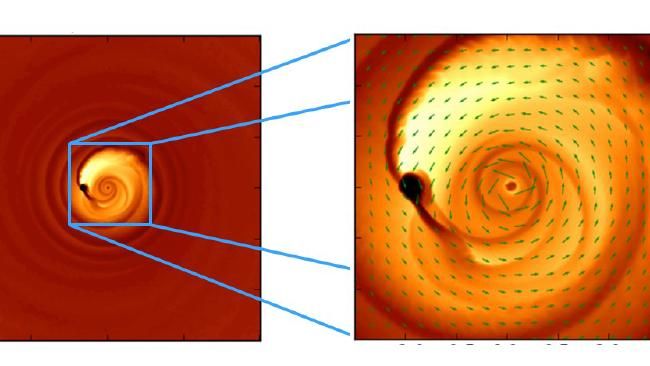
NASA scientists have discovered two large black holes which are on course to collide causing a massive blast that will destroy the galaxy.
However, there is no need to panic, as the galaxy set to be destroyed is not our own one.
Researchers at NASA’s Galaxy Evolution Explorer (GALEX) say the two black holes will collide in approximately one million years, causing the PG 1302-102 galaxy to be obliterated.

BYPASS THE CENSORS
Sign up to get unfiltered news delivered straight to your inbox.
You can unsubscribe any time. By subscribing you agree to our Terms of Use
News.com.au reports:
Black hole mergers are considered to be the most violent events in the Universe.
When they finally meet, they converge in a type of “death spiral,” and are predicted to send out ripples known as gravitational waves, a theory devised by Albert Einstein 100 years ago.
Scientists at the California Institute of Pasadena who are trying to gauge a better understanding of how galaxies and black holes merge, first found the pair earlier this year after finding an unusual light signal coming from the centre of a galaxy, named PG 1302-102.

Using telescopes at the Catalina Real-Time Transient Survey, they found the varying signal was most likely generated by the motion of two black holes, while they swing around each other every five years.
The black holes themselves don’t give off light, but the material surrounding them does, NASA reported.
The study was published in this month’s edition of the journal, Nature.
According to the authors, as the black holes spin faster the material gives off more light. And the brighter the light, the closer it is to Earth.
“It’s as if a 60-Watt light bulb suddenly appears to be 100 Watts,” Daniel D’Orazio, lead author of the study from Columbia University told NASA.
“As the black hole light speeds away from us, it appears as a dimmer 20-Watt bulb.”
The researchers were able to prove their theory from observations made by both the GALEX and Hubble telescopes.
“We were lucky to have GALEX data to look through,” said co-author David Schiminovich of Columbia University in New York.
“We went back into the GALEX archives and found that the object just happened to have been observed six times.”
The researchers now hope others will be able to use what they have found to find even closer-knit merging black holes.
“We are strengthening our ideas of what’s going on in this system and starting to understand it better,” said Zoltan Haiman, another co-author from Columbia University.


